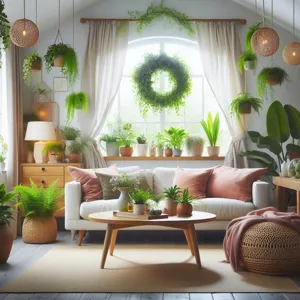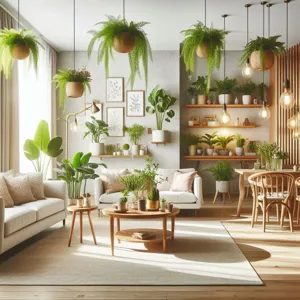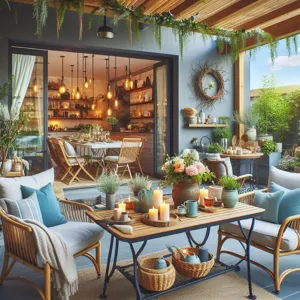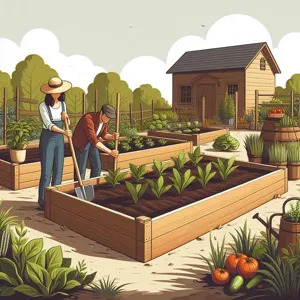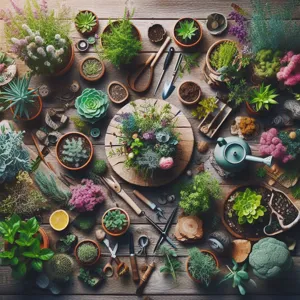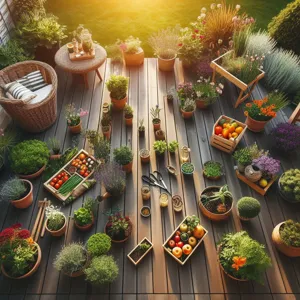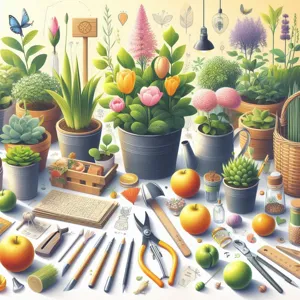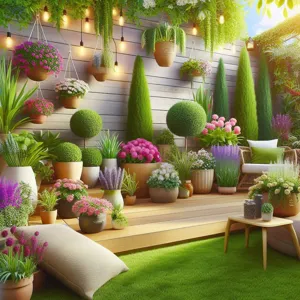Embarking on a vegan journey doesn’t mean sacrificing flavor or satisfaction; in fact, it opens the door to a vibrant world of culinary creativity! As more people embrace plant-based diets for health, environmental, and ethical reasons, the appeal of delicious vegan meals continues to soar.
whether you’re a seasoned vegan, a curious flexitarian, or simply looking to incorporate more plant-based meals into your diet, this post is for you. We’ve curated a list of the top 10 vegan recipes that are not only packed with nutrition but also bursting with flavor. From hearty comfort foods to refreshing dishes perfect for any season, these recipes will tantalize your taste buds and nourish your body. Get ready to explore the delightful combinations of fresh ingredients and bold spices that make vegan cooking an exciting adventure you won’t want to miss!
1. Introduction to Vegan Cooking

Vegan cooking is not just a dietary choice; it’s a vibrant culinary adventure that celebrates the rich tapestry of plant-based ingredients. As more people seek healthier, sustainable lifestyles, the appeal of vegan cuisine has surged, and for good reason. Imagine a world where flavor and nutrition come together in harmony, where every meal is a canvas for creativity, and where the abundance of nature’s bounty takes center stage.
At its core, vegan cooking embraces the philosophy of using only plant-derived ingredients—fruits, vegetables, grains, legumes, nuts, and seeds—while excluding all animal products. This shift not only promotes better health but also contributes to environmental sustainability and animal welfare. From hearty stews to refreshing salads and indulgent desserts, vegan recipes offer a diverse range of tastes and textures that can satisfy even the most discerning palates.
As you delve into the world of vegan cooking, you’ll discover an exciting array of flavors. Think creamy cashew sauces, zesty avocado dressings, and rich, savory lentil curries bursting with aromatic spices. Each dish showcases the versatility of plant-based ingredients, transforming humble staples into culinary masterpieces. Whether you’re a seasoned vegan or just curious about incorporating more plant-based meals into your diet, this introduction to vegan cooking will inspire you to explore new ingredients and techniques.
In this blog post, we’ll guide you through ten of the most delicious and nutritious vegan recipes that you absolutely need to try. Get ready to expand your cooking repertoire and delight your taste buds with meals that are as satisfying as they are wholesome!
2. Benefits of a Vegan Diet
Embracing a vegan diet offers a multitude of benefits that extend beyond just the culinary realm. First and foremost, it can significantly improve your health. A well-planned vegan diet is rich in fruits, vegetables, whole grains, nuts, and seeds, all of which are packed with essential vitamins, minerals, and antioxidants. These nutrient-dense foods can help lower the risk of chronic diseases, including heart disease, diabetes, and certain cancers. Numerous studies have shown that vegans tend to have lower cholesterol levels, healthier blood pressure, and a reduced risk of obesity, thanks to the emphasis on whole, plant-based foods.
Beyond health, a vegan diet is also incredibly environmentally friendly. The production of plant-based foods generally requires fewer resources—such as land, water, and energy—compared to animal farming. By opting for a vegan lifestyle, you contribute to a reduction in greenhouse gas emissions and help lessen the environmental impact associated with meat and dairy production. This not only nurtures the planet but also promotes a more sustainable future for generations to come.
Moreover, the ethical considerations of a vegan diet cannot be overlooked. Choosing plant-based options aligns with a compassionate approach to living that seeks to minimize harm to animals. Many individuals turn to veganism as a way to express their values and advocate for animal rights, contributing to a movement that is gaining momentum worldwide.
Finally, a vegan diet opens up a world of culinary creativity. With an abundance of ingredients to explore, you can experiment with diverse flavors, textures, and cuisines. From hearty lentil stews to vibrant vegetable stir-fries, the possibilities are endless. So, not only are you nourishing your body and supporting the planet, but you’re also embarking on a delicious journey of discovery in the kitchen. Whether you’re a seasoned vegan or just curious about incorporating more plant-based meals into your life, the benefits of a vegan diet are well worth considering.
3. Tips for Cooking Delicious Vegan Meals

Cooking delicious vegan meals can be an exciting culinary adventure, full of vibrant flavors and textures that will leave your taste buds dancing. Here are some tried-and-true tips to elevate your vegan cooking game and ensure each dish is as satisfying as it is nutritious.
**1. Embrace Umami:** One of the keys to creating rich, delicious flavors in vegan dishes is to embrace umami—the savory taste that makes food crave-worthy. Ingredients like mushrooms, sun-dried tomatoes, nutritional yeast, miso paste, and tamari can add depth to your meals. For example, sautéing shiitake mushrooms or adding a sprinkle of nutritional yeast to your sauces can transform a simple dish into a flavor sensation.
**2. Experiment with Herbs and Spices:** The right combination of herbs and spices can elevate your dishes from bland to bursting with flavor. Don’t shy away from experimenting with fresh herbs like basil, cilantro, and parsley, or spices such as cumin, smoked paprika, and turmeric. A pinch of chili powder can bring warmth, while a hint of cinnamon can add a surprising twist to savory dishes.
**3. Utilize Whole Foods:** Focus on whole, unprocessed ingredients as much as possible. Fresh vegetables, legumes, whole grains, nuts, and seeds not only provide essential nutrients but also offer a variety of textures and flavors. Consider preparing a hearty quinoa salad with roasted veggies or a comforting lentil stew, where the natural flavors of the ingredients shine.
**4. Incorporate Healthy Fats:** Healthy fats enhance flavor and improve the absorption of fat-soluble vitamins. Avocado, coconut oil, nuts, and seeds can add creaminess and richness to your meals. Try blending avocado into your smoothies for a luscious texture or drizzling tahini over your roasted vegetables for a delectable finish.
**5. Experiment with Plant-Based Substitutes:** With the rise of plant-based cooking, there are now countless alternatives to traditional animal products. From cashew cream to chickpea flour, these substitutes can help recreate your favorite dishes. For instance, using lentils or jackfruit can give you the satisfying texture of meat in tacos or BBQ sandwiches, while cashew cheese can satisfy any cheese cravings.
**6. Balance Your Plate:** A well-rounded vegan meal should include a balance of protein, healthy fats, and carbohydrates. Pair beans or lentils with whole grains like brown rice or quinoa, and add a variety of colorful vegetables to ensure you’re getting a full spectrum of nutrients.
**7. Don’t Forget the Sweetness:** A touch of sweetness can enhance flavors, so don’t hesitate to add elements like maple syrup, agave nectar, or dates to your savory dishes. Caramelizing onions or roasting sweet potatoes can also bring out their natural sweetness and create a delightful contrast against savory ingredients.
By incorporating these tips into your cooking, you’ll not only make your vegan meals more delicious but also showcase the incredible variety and potential of plant-based eating. Whether you’re whipping up a comforting stew or a vibrant salad, these strategies will help you create dishes that are both satisfying and nourishing. Happy cooking!
4. Recipe 1: Creamy Vegan Pasta Alfredo
When you’re in the mood for comfort food that’s both indulgent and nourishing, look no further than this Creamy Vegan Pasta Alfredo. This recipe is a delightful twist on a classic favorite, proving that you don’t have to sacrifice flavor or texture when opting for a plant-based diet.
To start, select your favorite pasta—whether it’s spaghetti, fettuccine, or even gluten-free options, the choice is yours. The base of this luscious sauce is a blend of soaked cashews and nutritional yeast, which together create a rich, creamy consistency reminiscent of traditional Alfredo. Simply soak the cashews in water for a couple of hours or overnight, then blend them with garlic, lemon juice, and a splash of plant-based milk until smooth and velvety. The nutritional yeast adds a cheesy, umami flavor that elevates the dish to new heights.
As the pasta cooks to al dente perfection, sauté some fresh vegetables such as spinach, mushrooms, or broccoli in a splash of olive oil. This not only adds a pop of color but also packs in extra nutrients. Once the pasta is cooked, toss it in the creamy sauce and stir in the sautéed veggies for a hearty meal that’s bursting with flavor.
Finish it off with a sprinkle of fresh parsley and a dash of black pepper for a vibrant garnish. Whether you’re serving it for a cozy dinner at home or impressing guests at a gathering, this Creamy Vegan Pasta Alfredo is guaranteed to please everyone at the table. It’s a dish that showcases how easy it can be to whip up something deliciously satisfying while keeping it entirely plant-based. Enjoy this creamy delight and watch your friends and family fall in love with vegan cooking!
5. Recipe 2: Spicy Chickpea Tacos

### 5. Recipe 2: Spicy Chickpea Tacos
If you’re looking for a vibrant, flavor-packed meal that’s both satisfying and nutritious, look no further than these Spicy Chickpea Tacos. This dish brings together the hearty, protein-rich goodness of chickpeas with a fiery kick that will tantalize your taste buds.
To begin, you’ll want to sauté finely chopped onions and minced garlic in a splash of olive oil until they’re golden and aromatic. Next, add in your canned chickpeas (drained and rinsed) and season them with a robust blend of spices, including cumin, smoked paprika, and a touch of cayenne pepper for that extra heat. As the chickpeas cook, they soak up the spices, creating a wonderfully rich and savory filling that’s sure to impress.
While your chickpeas are sizzling away, prepare your taco shells. You can opt for traditional corn tortillas, warm them on a skillet, or try using lettuce wraps for a refreshing twist. Once your chickpeas are perfectly spiced and slightly crispy on the outside, it’s time to assemble your tacos.
Layer the chickpea mixture into your chosen shells and top them off with a medley of fresh ingredients. Imagine the crunch of diced cucumbers, the creaminess of avocado slices, and the zesty brightness of lime juice drizzled on top. For those who crave a little extra flavor, a dollop of homemade vegan sour cream or a sprinkle of chopped cilantro can elevate this dish to new heights.
These Spicy Chickpea Tacos are not only a feast for the senses but also a quick and easy option for weeknight dinners or a vibrant addition to a weekend gathering. They’re packed with protein, fiber, and a bounty of vitamins, making them a perfect choice for anyone seeking a healthy, plant-based meal. Trust us, once you take your first bite, you’ll be adding this recipe to your regular rotation!
6. Recipe 3: Hearty Lentil Soup
When the weather turns chilly or you simply crave a comforting bowl of goodness, there’s nothing quite like a hearty lentil soup to warm your soul. This vegan delight is not only packed with flavor but also brimming with nutrients, making it the perfect dish to nourish your body and satisfy your taste buds.
### Ingredients:
To create this deliciously rich soup, you’ll need a medley of wholesome ingredients:
– 1 cup of green or brown lentils, rinsed and drained
– 1 tablespoon olive oil
– 1 onion, diced
– 2 carrots, chopped
– 2 celery stalks, chopped
– 3 cloves of garlic, minced
– 1 can (14 oz) of diced tomatoes
– 6 cups vegetable broth
– 2 teaspoons ground cumin
– 1 teaspoon smoked paprika
– Salt and pepper to taste
– Fresh spinach or kale (optional, for added greens)
– Fresh parsley or cilantro, chopped (for garnish)
### Instructions:
1. **Sauté the Vegetables**: In a large pot, heat the olive oil over medium heat. Add the diced onion, carrots, and celery, sautéing until they soften and the onion becomes translucent, about 5-7 minutes. Stir in the minced garlic and cook for an additional minute until fragrant.
2. **Add the Lentils and Spices**: Toss in the rinsed lentils, diced tomatoes, cumin, and smoked paprika. Stir to combine, allowing the spices to infuse with the vegetables for a minute.
3. **Pour in the Broth**: Add the vegetable broth to the pot, bringing the mixture to a gentle boil. Once boiling, reduce the heat to low and let it simmer uncovered for about 30-35 minutes, or until the lentils are tender.
4. **Incorporate Greens**: If you’re adding spinach or kale, stir them in during the last 5 minutes of cooking. They should wilt nicely without losing their vibrant color.
5. **Season to Taste**: After simmering, taste and adjust the seasoning with salt and pepper.
6. **Serve and Garnish**: Ladle the soup into bowls and sprinkle with fresh parsley or cilantro for a burst of freshness. For an extra touch, consider a drizzle of olive oil or a squeeze of lemon juice.
### Why You’ll Love It:
This hearty lentil soup is not only incredibly satisfying but also a powerhouse of nutrition. Lentils are rich in protein, fiber, and essential minerals, making them a staple in vegan diets. The combination of vegetables adds color and a range of vitamins, while the warm spices create a cozy, aromatic experience.
Whether enjoyed as a warm lunch or a cozy dinner, this soup is sure to become a staple in your kitchen. Plus, it’s easy to make in large batches, allowing you to enjoy leftovers throughout the week or freeze some for later. Dive into this delicious and nutritious recipe, and let the comforting flavors embrace you!
7. Recipe 4: Quinoa and Black Bean Salad

Quinoa and Black Bean Salad is a vibrant dish that perfectly balances taste and nutrition, making it a must-try for anyone looking to embrace a healthier lifestyle. This salad is not only visually appealing with its colorful array of ingredients, but it’s also packed with protein, fiber, and essential vitamins.
To prepare this delightful dish, begin by cooking a cup of quinoa until it’s fluffy and has absorbed all of its water. As it cooks, rinse and drain a can of black beans, which adds a hearty texture and rich flavor to the salad. Next, chop up a medley of fresh vegetables: crisp bell peppers, sweet cherry tomatoes, and refreshing red onion. Toss in a handful of corn kernels for a pop of sweetness and a splash of color.
For the dressing, whisk together fresh lime juice, olive oil, cumin, and a pinch of salt and pepper to create a zesty marinade that brings all the components together. Combine the cooked quinoa, black beans, and chopped vegetables in a large bowl, then drizzle the dressing over the top. Gently toss everything until well coated, and let it sit for a few minutes to allow the flavors to meld.
Serve this salad chilled or at room temperature, and don’t forget to sprinkle some fresh cilantro on top for an extra burst of flavor. This Quinoa and Black Bean Salad can be a light lunch, a side dish for dinner, or a nutritious option for meal prep, making it incredibly versatile. With its delicious taste and impressive health benefits, it’s no wonder this recipe has earned a spot on our top ten list. Enjoy this wholesome dish that will keep you coming back for more!
8. Recipe 5: Vegan Mushroom Stroganoff
### Recipe 5: Vegan Mushroom Stroganoff
If you’re seeking a comforting and hearty dish that will leave you satisfied without sacrificing flavor, look no further than this Vegan Mushroom Stroganoff. This recipe transforms the classic creamy stroganoff into a plant-based delight, featuring earthy mushrooms and a rich, savory sauce that clings beautifully to your choice of pasta or grains.
To start, gather an assortment of mushrooms—cremini, shiitake, and portobello work wonderfully together, creating a depth of flavor that elevates the dish. Sauté the mushrooms in a splash of olive oil until they’re beautifully browned, releasing their umami essence. Next, add in garlic and onions, allowing their aromatic goodness to infuse the dish.
The magic truly happens when you incorporate a blend of vegetable broth, coconut cream or cashew cream, and a splash of soy sauce or tamari for a hint of saltiness. These ingredients meld together to create a luscious sauce that envelops the mushrooms and your choice of pasta, whether it be traditional egg noodles or gluten-free options like zucchini noodles or whole grain pasta.
For an extra layer of flavor, a sprinkle of nutritional yeast adds a cheesy, nutty taste, while a dash of smoked paprika gives the stroganoff a subtle warmth. Finally, finish with a generous handful of fresh parsley for a pop of color and freshness.
Serve your Vegan Mushroom Stroganoff hot, perhaps with a side of crusty whole-grain bread or a crisp green salad. This dish not only showcases the hearty texture of mushrooms but also packs a nutritional punch, offering protein, fiber, and a bounty of vitamins. Perfect for a cozy weeknight dinner or impressing guests at a dinner party, this Vegan Mushroom Stroganoff is sure to become a staple in your culinary repertoire. Enjoy every creamy, delicious bite!
9. Recipe 6: Roasted Vegetable Buddha Bowl
### Recipe 6: Roasted Vegetable Buddha Bowl
The Roasted Vegetable Buddha Bowl is a vibrant, nourishing meal that celebrates the simplicity and flavor of whole foods. This dish is not only visually appealing but also packed with nutrients to fuel your day. Picture a colorful mix of seasonal vegetables, roasted to perfection, their natural sweetness enhanced by a drizzle of olive oil and a sprinkle of your favorite spices.
Start with a base of fluffy quinoa or brown rice, which provides a hearty foundation for the bowl. As the grains soak up the flavors of the roasted veggies, you can prepare the star of the show: an assortment of vegetables such as sweet potatoes, bell peppers, zucchini, and Brussels sprouts. Roast them in the oven until they reach a golden-brown hue and develop a delicious caramelized texture.
To elevate this dish, add a handful of leafy greens like kale or spinach, which provide a fresh crunch and vibrant color. Top it all off with a creamy tahini dressing, made from tahini, lemon juice, garlic, and a hint of maple syrup for sweetness. This dressing brings everything together, adding a rich, nutty flavor that perfectly complements the roasted vegetables.
Finally, finish your Buddha Bowl with a sprinkle of sesame seeds or chopped nuts for a satisfying crunch and a boost of healthy fats. Enjoy it warm or cold; either way, this Roasted Vegetable Buddha Bowl is a versatile, wholesome meal that will leave you feeling satisfied and energized. Whether you’re meal prepping for the week or looking for a quick dinner option, this recipe is a must-try that embodies the deliciousness and nutrition of vegan cooking.
10. Recipe 7: Chocolate Avocado Mousse
### Recipe 7: Chocolate Avocado Mousse
Indulge in a rich and creamy dessert that defies the traditional notion of indulgence—meet the Chocolate Avocado Mousse! This decadent treat is not only a feast for the senses but also a powerhouse of nutrients that will leave you feeling satisfied without the guilt.
At first glance, the combination of chocolate and avocado might raise some eyebrows, but trust us, this is a match made in culinary heaven. Ripe avocados serve as the base, lending a silky texture that mimics the creaminess of traditional mousse while packing in healthy fats, fiber, and a wealth of vitamins. The natural richness of the avocado is perfectly complemented by the deep, luxurious flavor of high-quality cocoa powder.
To whip up this delightful mousse, simply blend together ripe avocados, cocoa powder, maple syrup or agave nectar for sweetness, a splash of vanilla extract, and a pinch of salt to enhance the flavors. The result is a luscious, velvety mousse that can be enjoyed straight from the blender or chilled for an even more indulgent experience.
For an extra touch of elegance, consider garnishing with fresh berries, a sprinkle of crushed nuts, or a dollop of coconut whipped cream. Not only does this add a beautiful visual element, but it also enhances the flavor and texture, making each bite a delightful surprise.
Perfect for parties, romantic dinners, or simply when you’re in the mood for a sweet treat, this Chocolate Avocado Mousse is a dessert that proves you can have your cake and eat it too—without compromising on health or flavor. Once you try this recipe, you’ll wonder how you ever lived without it!
11. Recipe 8: Vegan Pancakes with Maple Syrup
Fluffy, golden-brown, and drizzled with rich maple syrup, these vegan pancakes are a delightful way to start your day or enjoy a cozy brunch. Made with simple, wholesome ingredients, they offer a perfect balance of taste and nutrition that will have everyone coming back for seconds.
To make these delectable pancakes, you’ll need a combination of flour, plant-based milk, a touch of baking powder, and a natural sweetener like mashed bananas or agave syrup to give them that delightful sweetness without compromising the vegan ethos. The result is a batter that comes together effortlessly, creating pancakes that are light and airy yet hearty enough to satisfy your hunger.
As you pour the batter onto a hot skillet, watch as the surface bubbles gently, signaling the perfect moment to flip. The aroma that fills your kitchen is simply irresistible—warm, inviting, and reminiscent of lazy weekend mornings. Once cooked to a beautiful golden hue, serve these pancakes stacked high, topped with a generous drizzle of pure maple syrup, and perhaps some fresh berries or sliced bananas for an extra burst of flavor and nutrients.
These vegan pancakes are not just a treat for the taste buds but also a canvas for creativity. You can easily customize them by adding in your favorite ingredients such as chocolate chips, chopped nuts, or even a sprinkle of cinnamon for a warming spice. Whether you enjoy them for breakfast, dessert, or a quick snack, these pancakes are bound to become a staple in your vegan cooking repertoire. Indulge in the deliciousness and let these vegan pancakes redefine your breakfast experience!
12. Recipe 9: Zucchini Noodles with Pesto
Zucchini noodles, often referred to as “zoodles,” are a fantastic way to enjoy a low-carb, gluten-free alternative to traditional pasta, all while packing in the nutrients. This delightful dish not only satisfies your pasta cravings but also bursts with vibrant flavors that will keep you coming back for more.
To prepare this refreshing meal, start by spiralizing fresh zucchini into long, curly strands that resemble spaghetti. The key to achieving the perfect texture is to lightly sauté the zoodles for just a few minutes until they are tender yet still retain a slight crunch. This quick cooking method allows the zucchini to absorb the flavors of the accompanying sauce without becoming too soggy.
For the star of the dish, the pesto, you have the option to create your own or opt for a store-bought variety. Making your own is simple and rewarding: blend together fresh basil, pine nuts, garlic, nutritional yeast, and a splash of olive oil until smooth. This vibrant green sauce is rich in antioxidants and healthy fats, making it both a flavorful and nutritious addition to your zoodles.
Once your noodles are cooked and your pesto is ready, toss them together in a large bowl, ensuring each strand is coated in that aromatic sauce. To elevate the dish further, consider adding cherry tomatoes for a pop of color and sweetness, a sprinkle of toasted pine nuts for added crunch, and a squeeze of lemon juice to brighten the flavors.
Serve your Zucchini Noodles with Pesto warm or chilled, garnished with fresh basil or a sprinkle of red pepper flakes for an extra kick. This dish not only looks beautiful but is also a powerhouse of nutrients, providing a guilt-free yet satisfying meal that is sure to impress both vegans and non-vegans alike. Dive into this delicious recipe and discover how easy it is to enjoy a wholesome plant-based meal!
13. Recipe 10: Coconut Curry with Tofu
**Recipe 10: Coconut Curry with Tofu**
Indulge your taste buds with a vibrant and fragrant Coconut Curry with Tofu that embodies the essence of comfort food, all while being entirely plant-based. This recipe is a delightful fusion of spices, creamy coconut milk, and fresh vegetables, creating a dish that is not only visually appealing but also packed with nutrients.
Begin by pressing firm tofu to remove excess moisture, allowing it to absorb all the flavors of the curry. Once golden and crispy, the tofu becomes the perfect canvas for the rich, aromatic curry sauce. Sauté a medley of colorful vegetables—think bell peppers, zucchini, and snap peas—in a splash of olive oil, allowing them to retain their crunch and vibrant hues.
Next, introduce a blend of spices—cumin, coriander, and a hint of turmeric—into the pan, letting their natural fragrances bloom. The addition of garlic and ginger adds a zesty kick, while the star ingredient, coconut milk, creates a luscious and creamy base that ties all the flavors together. Simmering the mixture allows the spices to infuse, forming a harmonious balance of heat and sweetness.
Serve the curry over a bed of fluffy jasmine rice or quinoa, garnishing with fresh cilantro and a squeeze of lime for an extra zing. This Coconut Curry with Tofu not only delivers on flavor but also nourishes the body with plant-based protein and an array of vitamins. Perfect for weeknight dinners or meal prep, it’s a dish that promises to leave everyone at the table craving seconds. Dive into this delectable recipe and discover how easy and satisfying vegan cooking can be!
14. How to Customize and Adapt Recipes
When it comes to vegan cooking, one of the most exciting aspects is the ability to customize and adapt recipes to suit your tastes, dietary needs, and the ingredients you have on hand. Embracing creativity in the kitchen not only adds a personal touch to your meals but also makes the cooking process more enjoyable and intuitive.
**Start with the Basics:** Every recipe has a foundation, whether it’s a hearty vegetable stew or a refreshing smoothie. Begin by identifying the core components of the dish—these might include proteins, grains, and vegetables. Once you understand the base, you can easily swap ingredients based on what you have available or what flavors you prefer. For example, if a recipe calls for quinoa but you only have brown rice, go ahead and make that substitution; they both provide a similar texture and nutritional profile.
**Experiment with Flavors:** Don’t be afraid to play with spices and herbs. If a recipe suggests cumin but you’re more fond of smoked paprika, make that switch! Taste as you go and let your palate guide you. Adding a splash of lemon juice or a drizzle of balsamic vinegar can completely transform a dish, so keep your seasoning options varied and be bold in your choices.
**Consider Dietary Needs:** Whether you’re gluten-free, nut-free, or looking to lower your sodium intake, vegan recipes are incredibly adaptable. Use gluten-free grains like millet or buckwheat instead of traditional pasta or bread. If you’re avoiding nuts, substitute them with seeds or legumes to maintain crunch and protein without compromising on taste.
**Portion control and Meal Prep:** Adjust serving sizes and ingredient amounts based on your household needs. If you’re cooking for one, it’s easy to scale down a recipe or make a large batch for meal prep. Leftovers can often be transformed into new meals, like turning a roasted vegetable medley into a filling for tacos or a salad topping.
**Incorporate Seasonal Ingredients:** One of the joys of cooking vegan is the opportunity to embrace seasonal produce. Visit your local farmer’s market and let fresh fruits and vegetables inspire your meals. For example, substituting zucchini for pasta in summer or incorporating hearty root vegetables in winter can add a seasonal touch and enhance the dish’s nutritional value.
In essence, customizing and adapting vegan recipes is about embracing flexibility and creativity in the kitchen. With a willingness to experiment and a knack for substituting ingredients, you’ll find that deliciousness and nutrition can be tailored to fit any lifestyle or palate. So grab your apron, gather your ingredients, and start crafting your own unique vegan masterpieces!
15. Conclusion and Encouragement to Explore Vegan Cooking
In conclusion, the journey into vegan cooking is not just about substituting ingredients; it’s a vibrant exploration of flavors, textures, and colors that can invigorate your meals and your well-being. The ten recipes we’ve shared offer a delicious starting point for anyone, whether you’re a seasoned vegan or simply curious about incorporating more plant-based meals into your diet.
As you experiment with these dishes, don’t be afraid to make them your own. Swap out ingredients based on what’s in season, add your favorite spices, or try new plant-based ingredients that catch your eye. The beauty of vegan cooking lies in its versatility and the endless possibilities it presents.
Embrace the adventure of cooking with fresh vegetables, whole grains, and legumes, and you’ll find that preparing vegan meals can be both simple and rewarding. Not only will you enjoy the satisfaction of creating nourishing dishes, but you’ll also be contributing positively to your health and the environment.
So, gather your ingredients, roll up your sleeves, and dive into the world of vegan cooking. With each dish you create, you’ll discover that plant-based meals can be immensely satisfying and delicious. Remember, every meal is an opportunity to nourish your body while tantalizing your taste buds. Happy cooking!
As we wrap up our exploration of the top 10 delicious and nutritious vegan recipes, we hope you’re feeling inspired to embrace the vibrant world of plant-based cooking. Each recipe not only showcases the incredible flavors and textures that vegan cuisine has to offer but also highlights the health benefits of incorporating more plant-based meals into your diet. Whether you’re a seasoned vegan or simply looking to add more nutritious options to your meals, these recipes are sure to delight your taste buds and nourish your body. So gather your ingredients, roll up your sleeves, and embark on a culinary adventure that celebrates the beauty of vegan cooking. We can’t wait to hear about your experiences in the kitchen, so be sure to share your creations with us! Happy cooking!
——————————

